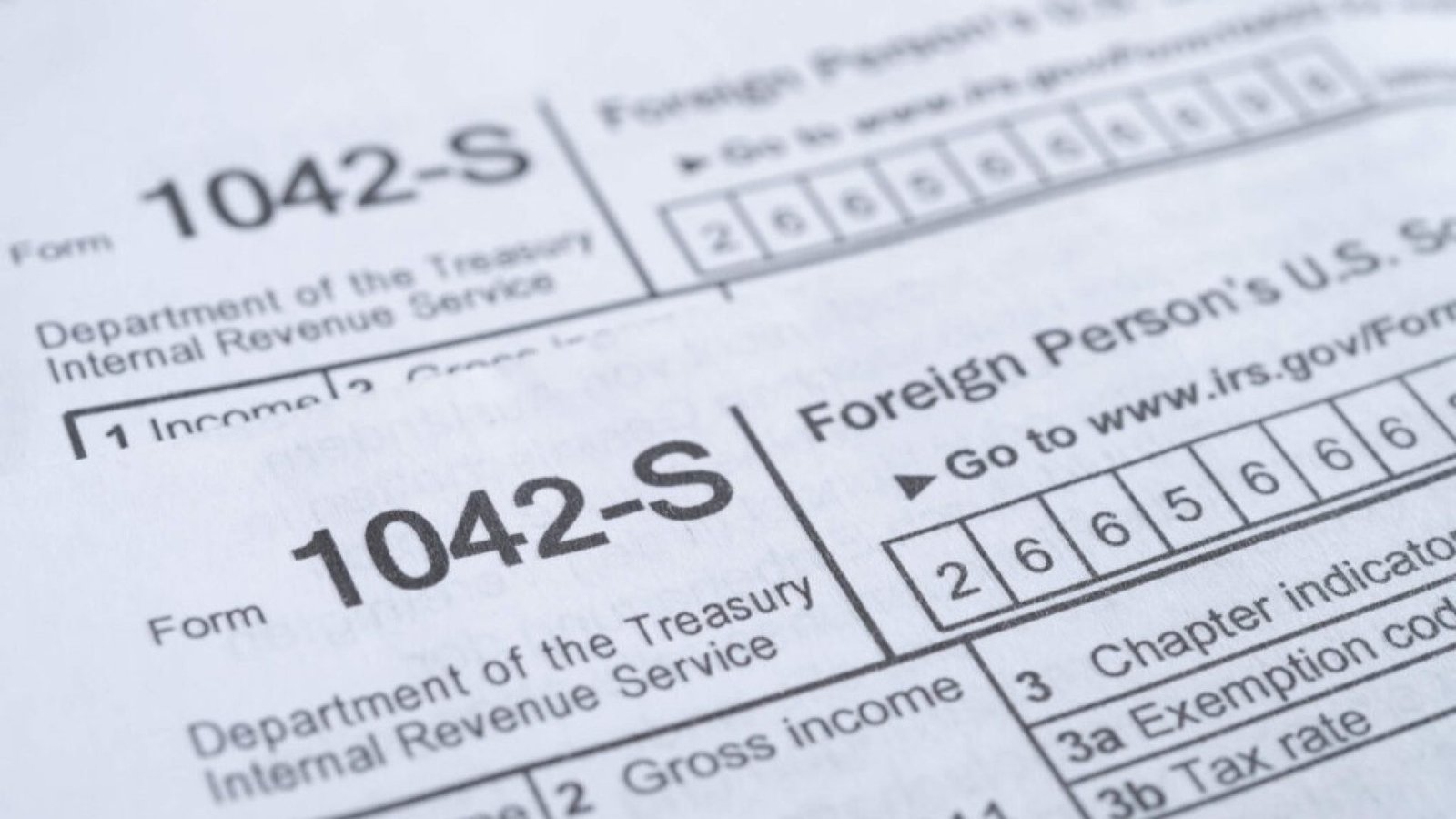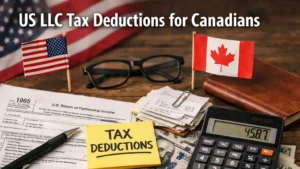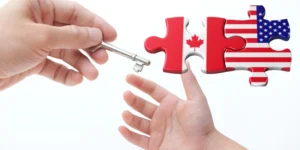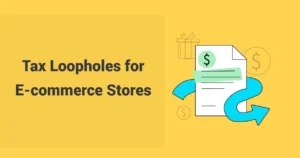If you earn money from U.S. sources—like royalties, dividends, or scholarships—as a non-U.S. person or business, you likely have a Form 1042-S. This IRS form shows your U.S. income and any taxes taken out. It helps you follow U.S. tax rules and get back extra taxes withheld. Watch out: mistakes on Form 1042-S, like wrong income types, can cost payers a $310 penalty per form, delaying your refund or causing tax trouble.
This guide is for YouTubers abroad, foreign students, freelancers with U.S. clients, and others. It explains who receives Form 1042-S and how to report it on tax returns in clear, simple terms. Follow these instructions to handle your U.S. income and avoid problems. Stick with SAL Accounting to master this form like a pro.
Quick Takeaways
- What’s Form 1042-S? IRS form showing non-residents’ U.S. income and taxes withheld.
- Who Gets It? Foreign students, YouTubers, freelancers, businesses with U.S. income, sent by March 15.
- How to Report? File Form 1040-NR with Box 2 income, claim Box 7a tax credit, attach Copy C.
- Tax Treaties: Cut 30% withholding (e.g., 0% for Canadian royalties) with Form W-8BEN.
- Avoid Problems: Check for mistakes, file by June 15, use Sprintax or IRS.gov.
What is Form 1042-S and Why Do You Get It?
Form 1042-S shows U.S. income, like dividends, royalties, or scholarships, you earn as a non-resident, with any taxes withheld. This form for foreign individuals and businesses helps the IRS track tax withholding U.S. source income under U.S. tax rules for non-residents. Unlike Form 1042, which totals all withheld taxes, Form 1042-S details your payments.
Withholding agents, like universities or banks, file this form with the IRS and send you copies by March 15. They withhold the right tax, fix errors, and, for 2024, file online if submitting 10 or more forms. New 2025 codes cover special payments like settlements. Anyway, our US-Canada cross-border tax accountants are always here in SAL to help you with a free consultation.
Why You Get It
The form has two main purposes:
- IRS Reporting: Withholding agents report your payments and taxes withheld under Internal Revenue Code Chapters 3 (non-resident withholding) or 4 (FATCA). They file it even if no tax was withheld due to a tax treaty.
- Your Record: It helps you report income on your U.S. tax return (Form 1040-NR) and claim refunds for over-withheld taxes.
The usual withholding rate is 30% on most income, but tax treaties can lower or remove this. Form 1042-S shows these details.
Who Gets Form 1042-S?
If you’re a non-U.S. person or business earning U.S. income, you’ll likely get this form. These payments, called common U.S. income types, include most income except property sales. Common recipients include:
- Foreign students or academics earning scholarships or stipends (14% tax for F-1 visa holders).
- YouTubers or creators abroad get U.S. ad revenue or sponsorships.
- Freelancers or contractors paid by U.S. clients, often with 30%, or gambling winnings.
Example: A German YouTuber earning $10,000 from U.S. viewers or an Indian freelancer paid $5,000 by a U.S. company might get a Form 1042-S. You might get multiple forms if you earn different income types, like royalties and dividends, or have multiple accounts with a payer like a bank. Agents send Copies B, C, and D by March 15, while Copy A goes to the IRS.
Read More: “Form W-8BEN Explained: A Complete 2025 Guide for Foreign Individuals”
1042-S Instructions: Step-by-Step Guide for Non-Residents
Following 1042-S instructions seems tough, but you can report 1042-S income easily with clear steps. You don’t file Form 1042-S—your withholding agent does—but you may need to file Form 1040-NR to report income or get a refund. Here’s how to do it:
1. Check Your Form 1042-S
Your Form 1042-S is your guide to U.S. income. It shows what you earned and any taxes withheld, which you need for filing Form 1040-NR or claiming refunds. Make sure your name, address, Taxpayer ID Number (TIN), income amount (Box 2), tax withheld (Box 7a), and country code (Box 13b, e.g., ‘DE’ for Germany) are correct. Know these key boxes:
- Box 1 shows your income type, like dividends (code 06), royalties (code 12), or scholarships (code 16).
- Box 2 lists total income before withholding.
- Box 3a/4a explains why less or no tax was withheld (e.g., code 04 for treaty benefits).
- Box 7a shows tax withheld, which you use on Form 1040-NR.
- Box 13 has your name, country, and TIN, if any.
| Box | What It Shows | Why It Matters |
| Box 1 | Income type (e.g., dividends) | Shows what you earned |
| Box 2 | Total income | Amount to report on Form 1040-NR |
| Box 7a | Tax withheld | Credit for your tax return |
Ask your withholding agent, like a university or client, to fix any mistakes. Don’t make your own Form 1042-S.
Warning: Mistakes, like wrong income types or tax amounts, are common—IRS data shows many forms have errors, costing payers up to $310 per form in penalties.
2. Decide If You Need to File a Tax Return
You can skip Form 1040-NR if your agent withheld the right tax (30% or treaty rate) on income like dividends or royalties. File Form 1040-NR if:
- You earn income taxed differently (e.g., freelance work in the U.S.).
- You want a refund for extra tax withheld (e.g., treaty lowers the rate).
- You have other U.S. income to report.
3. Gather Your Documents (If Filing)
If Step 2 shows you need to file Form 1040-NR, collect all Forms 1042-S, your passport, visa, I-94 records, and a Social Security Number (SSN) or Taxpayer ID Number (TIN). Apply for a TIN with Form W-7 if you don’t have an SSN.
Read More: “How to File Form 1099-K for E-commerce: Amazon, Etsy, eBay, Shopify, and More”
4. File Form 1040-NR (If Needed)
If Step 2 shows you must file Form 1040-NR, put Box 2 income from Form 1042-S on Schedule NEC or other needed forms. Claim Box 7a tax withheld as a credit on Form 1040-NR. Attach Copy C to your federal return and Copy D to any state return. Note any treaty that lowers your tax rate, and include Form 8833 for claims over $100,000. File by:
- April 15 for U.S. wages or business income.
- June 15 for non-business income, like royalties.
- October 15 with an extension (file Form 4868 by April 15).
Use software like Sprintax, since most tax programs, like TurboTax, don’t support Form 1040-NR.
5. Get Help if Needed
U.S. tax rules for non-residents can feel tricky. Talk to our US tax specialists or use Sprintax, especially for multiple incomes or treaty questions.
Tax Treaty Benefits and Recovering Over-Withheld Tax
U.S. tax treaty policies with over 70 countries lower or remove the 30% tax on U.S. income. But state taxes, like in California or New York, don’t follow these treaties, so you might need to file separately there. Check with the state’s tax office. Need international tax guidance? We can help navigate complex treaty situations.
What Are Tax Treaty Benefits?
Treaties can save you money:
- The U.S.-Canada treaty often sets royalty tax to 0%.
- The U.S.-China treaty skips tax on up to $5,000 of scholarship income.
- The U.S.-Germany treaty cuts dividend tax to 15%.
To get these benefits, give Form W-8BEN (individuals) or W-8BEN-E (businesses) to your withholding agent before payment, noting the treaty rule. If they withheld too much, file Form 1040-NR to claim a refund. You can check your country’s benefits at IRS Tax Treaties.
How to Recover Over-Withheld Tax?
If the withholding agent took too much tax (e.g., 30% instead of a treaty’s 0% for royalties), follow these steps:
- File Form 1040-NR to report your income and withholding from Form 1042-S.
- Note the treaty rule that lowers your tax, and attach Form 8833 if your claim is over $100,000.
- Include Copy C to prove your refund claim.
- File within three years from the Form 1042-S date, or you’ll lose your refund.
- Expect refunds to take weeks or months, especially outside the U.S.
Example: A Chinese student whose scholarship had 14% tax withheld but is treaty-exempt can file Form 1040-NR to get it back.
| Case Study: Canadian Student’s $2,100 Scholarship SaveThe Problem: Noah, a Canadian student on an F-1 visa in the U.S., got a $15,000 U.S. scholarship in 2024. His Form 1042-S showed $2,100 withheld (14% tax), but the U.S.-Canada agreement meant no tax. Noah was confused by IRS terms, worried he’d lose that cash. What We Did: Our SAL Accounting team reviewed Noah’s Form 1042-S, checking Box 2 ($15,000) and Box 7a ($2,100 withheld). We filed Form 1040-NR using the U.S.-Canada agreement (no tax on scholarships), added Form 8833 and Copy C, and sent it by June 15, 2025, with Sprintax. The Result: Noah got his $2,100 back in 8 weeks, covering school costs. He now uses Form W-8BEN to avoid taxes. Our instructions made IRS rules easy, saving him money. |
Form 1042-S vs. 1099 and W-2: What’s Different?
Understanding Form 1042-S vs. 1099 and W-2 prevents confusion:
| Form | Purpose | Recipient | Income Type | Withholding |
| 1042-S | Shows U.S. income for non-residents | Non-residents, foreign businesses | Dividends, royalties, scholarships | 30% (or treaty rate); 14% for some scholarships |
| 1099 | Shows income for U.S. persons | U.S. citizens, residents | Interest, dividends, freelance income | Usually none, except in some cases |
| W-2 | Shows wages for employees | U.S. employees, some non-residents | Wages, salaries, bonuses | Graduated wage withholding |
- Form 1042-S includes treaty-exempt income, like non-taxable scholarship parts.
- Form 1099 uses types like 1099-DIV for dividends or 1099-MISC for other income.
- Form W-2 and 1042-S might both go to non-residents, with W-2 for taxable wages and 1042-S for treaty-exempt income.
Example: A Moroccan contractor might receive a W-2 for $2,250 in taxable U.S. wages and a 1042-S for $5,000 exempt under the U.S.-Morocco treaty.
Read More: “What is IRS Form 8833? Step-by-Step Guide for Tax Treaty Benefits”
Common Challenges and Their Solutions
Non-residents often face challenges with Form 1042-S.
Wrong Income or Tax Amounts
Your Form 1042-S might show the wrong income types or tax amounts. In 2023, some non-residents faced too much tax withheld during U.S. brokerage deals, causing refund delays.
Solution: Check your Form 1042-S carefully. Ask your withholding agent, like a bank or university, to fix mistakes. File Form 1040-NR to get money back if too much tax was taken.
Missing Tax Treaty Benefits
If you don’t send Form W-8BEN in time, you face a 30% tax on tax withholding U.S. source income, even if a treaty lowers it.
Solution: Give Form W-8BEN to your withholding agent early to use treaty benefits and avoid extra taxes.
| Case Study: Canadian Freelancer’s $3,000 Tax WinThe Problem: Emma, a Canadian freelance writer, earned $10,000 in 2024 from U.S. clients for blog content. Her Form 1042-S showed $3,000 withheld (30% tax), but the U.S.-Canada agreement meant no tax on her royalties. She was frustrated, thinking she’d lost that money. What We Did: At SAL Accounting, we checked Emma’s Form 1042-S, confirming Box 1 (code 12, royalties) and Box 7a ($3,000 withheld). We filed Form 1040-NR using the U.S.-Canada agreement (no tax on royalties), listing her $10,000 income from Box 2. We added Form 8833 and sent it with Copy C by June 15, 2025, via Sprintax. The Result: Emma got her $3,000 back in 8 weeks, helping her business grow. She now uses Form W-8BEN to skip taxes. Our guide turned her tax mess into a win. |
Late Tax Filing
Missing the June 15 deadline to file Form 1040-NR delays your refund.
Solution: File Form 1040-NR by April 15 for wages or business income, or June 15 for income like royalties, to get your refund on time.
Confusing IRS Terms
IRS words can puzzle non-English speakers, making Form 1042-S hard to understand.
Solution: Use simple guides like IRS Publication 519, TaxBandits for e-filing help, Sprintax, Low Income Taxpayer Clinics, or IRS.gov. For expert help, call our non-resident tax experts to make it clear and easy.
Conclusion
Form 1042-S doesn’t need to stress you out. Learn who receives Form 1042-S, follow the 1042-S instructions, and master how to report 1042-S on tax return to manage U.S. taxes and save money. Whether you’re a student, YouTuber, or freelancer, this 1042-S guide makes U.S. income easy to handle. Check your form, use tax treaties, and file Form 1040-NR to get back extra taxes. For help, talk to our cross-border tax professionals or visit IRS.gov.
Frequently Asked Questions (FAQs)
Form 1042-S shows U.S. income paid to non-residents, like dividends, royalties, or scholarships, and any taxes withheld. It helps the IRS track payments and lets you report income or claim refunds.
Foreign students, YouTubers, freelancers, and businesses receive Form 1042-S if they earn U.S. income like scholarships, ad revenue, or dividends.
Enter Box 2 income from Form 1042-S on Form 1040-NR, Schedule NEC, or other schedules. Attach Copy C and claim Box 7a tax withheld as a credit.
It depends. Correctly withheld tax (e.g., 30% or treaty rate) may mean no extra taxes. Freelance work may require Form 1040-NR to calculate taxes.
Yes, if too much tax was withheld (e.g., 30% instead of a treaty’s lower rate), file Form 1040-NR within three years and attach Copy C.
No. Form 1042-S targets non-residents with U.S. income, while Form 1099 (e.g., 1099-DIV) applies to U.S. persons. Form 1042-S usually involves withholding, unlike most 1099s.
Ask your withholding agent (e.g., university or client) to correct the Form 1042-S. Don’t create your own version.
Agents send Form 1042-S by March 15 of the year after the payment, to you and the IRS.






